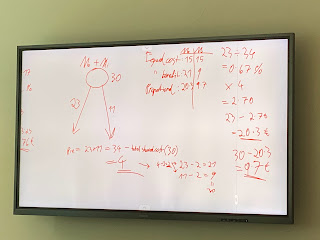MAR3001 Consumer Behaviour Learning Journal #6
We started our session with a repetition of important models with our professor stressing the importance of it in dealing with consumer behavior. Then, we did a case study about Pinterest. You may read my findings below.
Q1. Could be between variety seeking and dissonance reducing behavior because people usually go to pinterest to discover new things and find inspiration and according to the case study, users have the convenience to quickly buy products by following the links. It can also depend on the consumer themselves if they are highly involved or less involved. Therefore, the variations of the consumer buying process can cater towards more impulsive buying behavior, where aesthetics are irresistible to the consumer.
Q2. Unlike other social media platforms where early adopters are prominent in early usage and dispersed after a while, pinterest has garnered a lot of attention and diverse users. Pinterest's rise has been dispersed, fueled by unusual allies like the "bloggernacle" of tech-savvy young Mormons. Furthermore, approximately 83 percent of Pinterest's users are female, with the majority of them falling between the ages of 25 and 54—a demographic not often associated with fast-growing social media sites.
Q3. Pinterest offers the impression of a collection curated by an individual to represent her or his wants, goals, and wishes page after page. “Here are the lovely things that make me who I am—or who I want to be,” each person seems to be saying. A pinboard does not have a single subject. Pinterest is a site where brides plan their nuptials, people make their ultimate cuisine wish lists, and couples put together furniture sets for their new homes. Unlike other social media platforms, Pinterest's home page is a constantly changing collage that represents each user's preferences, interchanging between different cultures.
Q4. If the influencer is a creator, then it would transfer well with innovation and design as most of the posts have links to instagram as well. Companies, for example, pay Satsuki Shibuya, a 31-year-old designer with over a million Instagram followers, between $150 and $1,200 every photograph (Philip Kotler, 2016). This strategy works effectively because, due to Pinterest's realistic feel, it's nearly hard to detect the difference between paid and unpaid pins—something that other websites cannot claim. This shows the source credibility (the influencers), source attractiveness (designs), product match up (match between the influencer and what they are endorsing), and the meaning transfer (meaning applied to a product) can persuade the impact the influencer can make on the purchasing behavior of the customers.
Q5. Pinterest is a game-changing tool that introduces a whole new way of doing things, creating a new market disruption providing convenience and simplicity. Pinterest was the first social media platform dedicated to gathering and discovering photos related to certain interests. Other companies and websites, such as Instagram, Fancy, Google+, and Polyvore, that have mimicked the company’s aesthetics, have gained new markets as a result. The “job to be done” is both functional and emotional, where you can find roles of new products and how you feel owning it. There can also be tutorial on how to use a product and show the products can be utilized for the ‘job to be done’, which in turn gets the job done.
Reference: Philip Kotler, G. A. (2016). Principles of Marketing. Pearson Education Limited.


Comments
Post a Comment